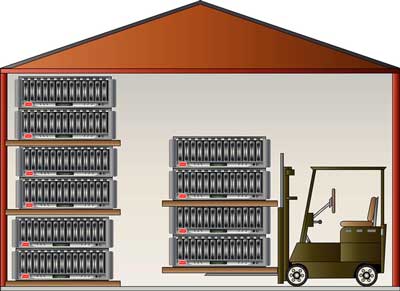- Advertising
- Bare Metal
- Bare Metal Cloud
- Benchmarks
- Big Data Benchmarks
- Big Data Experts Interviews
- Big Data Technologies
- Big Data Use Cases
- Big Data Week
- Cloud
- Data Lake as a Service
- Databases
- Dedicated Servers
- Disaster Recovery
- Features
- Fun
- GoTech World
- Hadoop
- Healthcare
- Industry Standards
- Insurance
- Linux
- News
- NoSQL
- Online Retail
- People of Bigstep
- Performance for Big Data Apps
- Press
- Press Corner
- Security
- Tech Trends
- Tutorial
- What is Big Data
Don't Use Apache Spark Before Reading This Useful Guide!

Apache Spark is among the most promising solutions for in-memory data processing that is capable of advanced batch and real-time analytics within the Hadoop ecosystem. This open source software is becoming mainstream, as businesses begin leveraging the true capabilities of advanced data analytics. Spark is in practical, real-world use in numerous industries for both batch and real-time data processing. But you shouldn’t delve into it without knowing a few basics first. So, here you go!
Get the Data Loaded & Ready

Unfortunately, this isn’t always the easiest process. Loading the data into Spark or Hadoop environment usually requires special tools, depending on the sources of your data. For example, some of the data may come from an existing data warehouse, or a mainframe computer, or various data sources, such as business software. You’ll also need to determine where the data is going to. In the overwhelming majority of situations, a business cloud solution is ideal, because these environments are fast to spin up, inexpensive to obtain, and radically scalable as your big data analytics operations evolve.
Take Advantage of Free Resources
Each vendor offers their own resources—some paid, some free. But you don’t have to pony up lots of money to learn all of the tips and tricks you need to succeed with Apache Spark. You’ll be pleased to know that almost all of the resources out there are tailored to beginners. That’s because most users, like you, are still novices. As your Spark initiatives grow and mature, you can take on additional learning to boost your escalating skills levels. Again, both paid and free options are out there to take advantage of.
You can begin with some resources like:
1. Usenix.org 1
2. Usenix.org 2
3. Apache Spark.org 1
4. Apache Spark.org 2
5. Apache Spark.org 3
6. Apache Spark.org 4
7. Berkeley 1
8. Berkeley 2
Get Involved in the Active Spark Community Forums

Another benefit to being one of many, many newbies is the ready availability of open community forums. There are numerous forums out there dedicated to learning and advancing the universe of Hadoop and Spark, including:
1. Spark
2. Databricks
3. NWEA (For educators)
4. Ignite Real Time.org
Create a Development Environment
As you learn, it’s immensely valuable to have an isolated environment where you can experiment and test, without compromising your actual data. This is another realm in which the cloud is helpful. You can acquire inexpensive, isolated test environments where you can play with Spark and learn your way around the Hadoop ecosystem, without compromising your primary big data analytics projects.
Have you considered a flexible data lake for your Spark environment? For a limited time only, you can discover the first bare-metal Data Lake as a Service in the world. Get 1TB free for life - limited to 100 applicants. Start here.
Readers also enjoyed:

5 Useful Things to Know Before Choosing Between Hadoop & Spark

1.jpg)
Leave a Reply
Your email address will not be published.